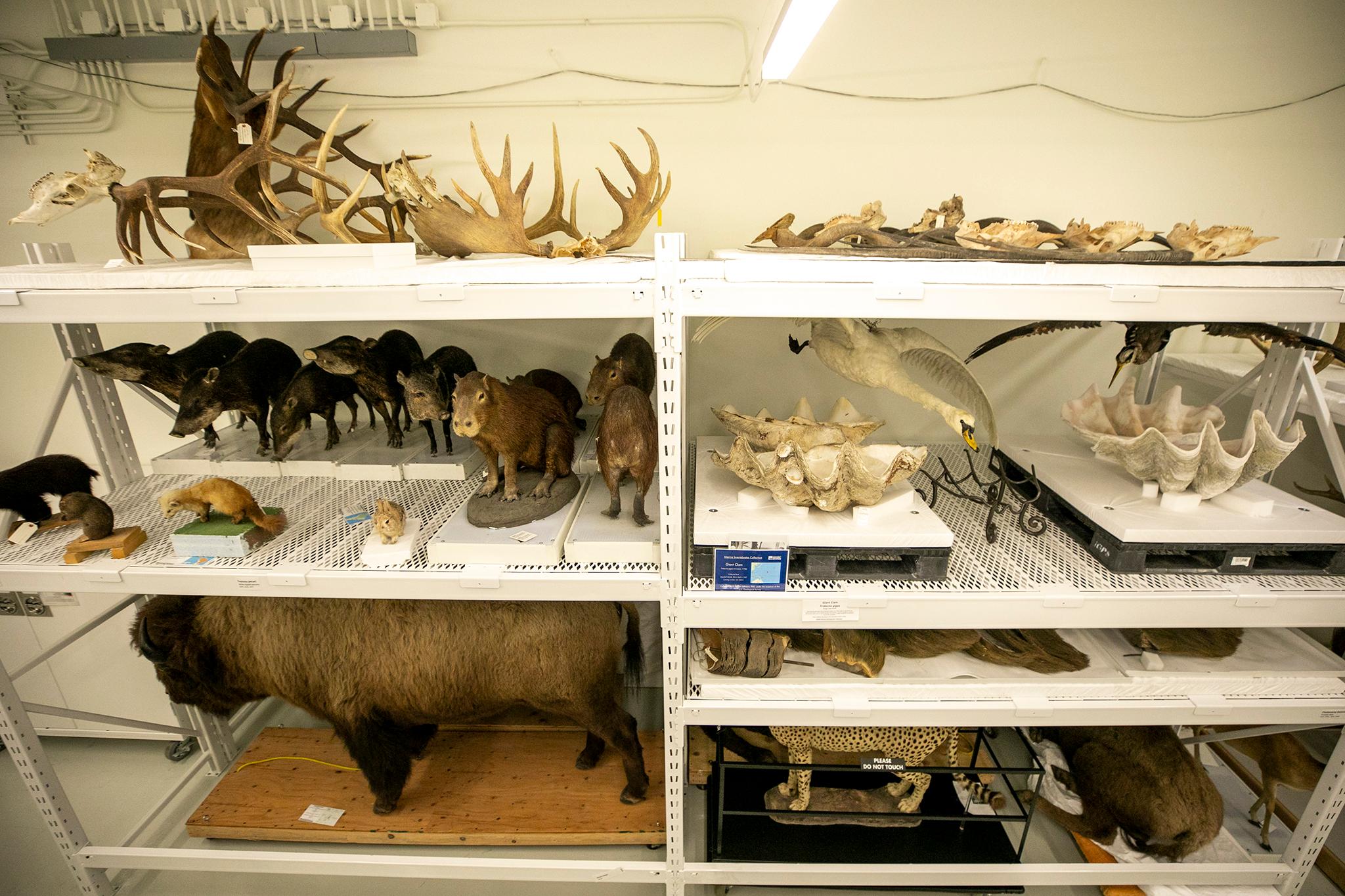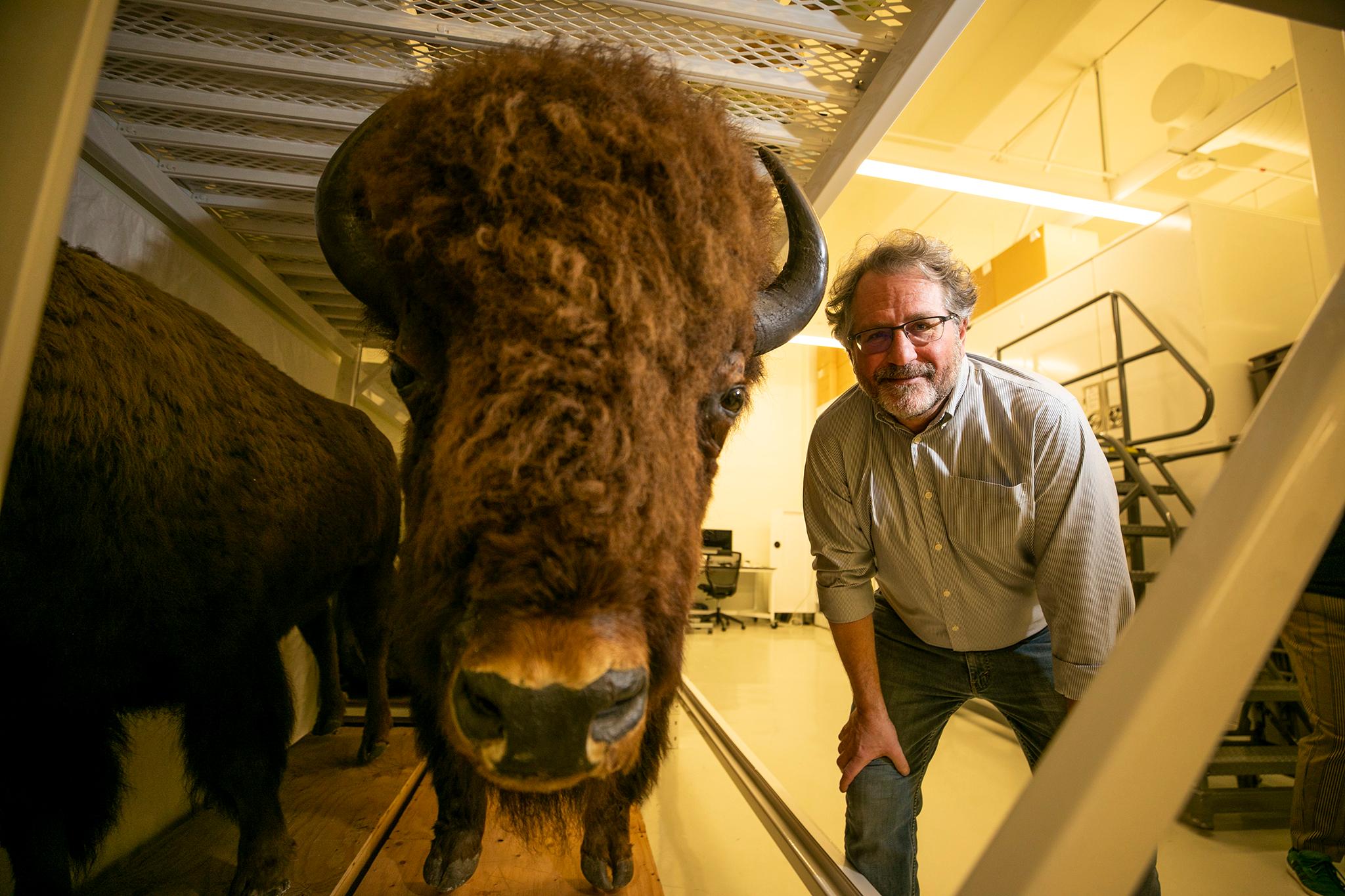There's a family of Bison in Colorado that hasn't moved a muscle in over a century. They're housed in the archives of the Denver Museum of Nature and Science. And one of them is missing.
Every single thing in the museum's collection - all 4.3 million pieces - has its own number. That includes these bison, cataloged as specimens Nos. 1, 2, 3 and 5.
So how did these bison get these numbers? As the curator of vertebrate zoology, John Demboski cares for this taxidermied herd, among many other specimens in the museum.
"These were part of a founding collection for the museum," Demboski said. "There were three founding collections here at the museum back in 1900."
The museum has two floors full of dioramas on public view where you can see taxidermied animals from around the world. But these bison live three floors underground.

When you step inside the floor where most zoology specimens live, you're greeted by all sorts of taxidermied birds suspended in flight; a snow leopard crouched on some snowy rocks; and a group of bison.
The first bison you see is specimen No. 2. He's hard to miss since he's the largest, tallest taxidermied animal in the room. And that makes him a bit imposing, standing proudly on all fours, mounted on a slab with wheels. But even with those wheels, Demboski said he's hard to move.
"Back in the day, taxidermy was a little different. This thing has a wooden frame, our understanding, it still has a skull in it, so that adds some weight. But it's extremely heavy," he said. "We don't like to move it. We've moved it a couple times and it's scary."

The other bison are smaller or they're lying down, as if they're taking a little nap.
This type of bison is native to the town of South Park, near Kenosha Pass. But it actually ceased to exist in Colorado in the 19th century.
The state has a couple other well-known bison herds. One lives off I-70 west of Evergreen. But they're not native.
"Those were actually seated from a remnant population up in Yellowstone in like 1914," Demboski said. "They were brought in from Wyoming."
There's also a herd east of Denver, at the Rocky Mountain Arsenal National Wildlife Refuge.

Meanwhile at the museum, there's a bit of a mystery. Where is bison No. 4?
"The museum was incorporated in 1900, but didn't have a building till 1908," Demboski said. "In that time, they went through [and] decided not to keep everything. So some of the material disappeared or was probably thrown out. And I don't have an explanation for where that is."
But the rest of this small herd has found its place, along with a shelf full of whale baleen, and a giant clam that may be radioactive.
Editor's Note: The Denver Museum of Nature and Science is a financial supporter of CPR, Denverite's parent organization.
Explore the series
Meet the giant clam at the Denver Museum of Nature and Science that witnessed a nuclear bomb drop
What is a whale baleen and why is its skeleton at the Denver Museum of Nature and Science?











